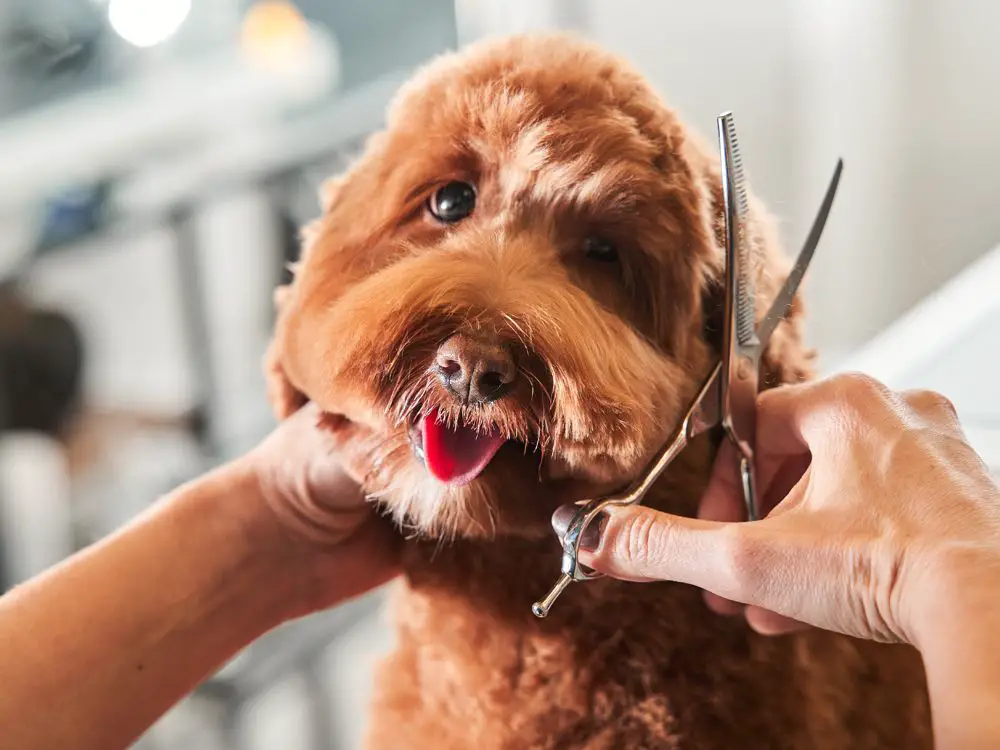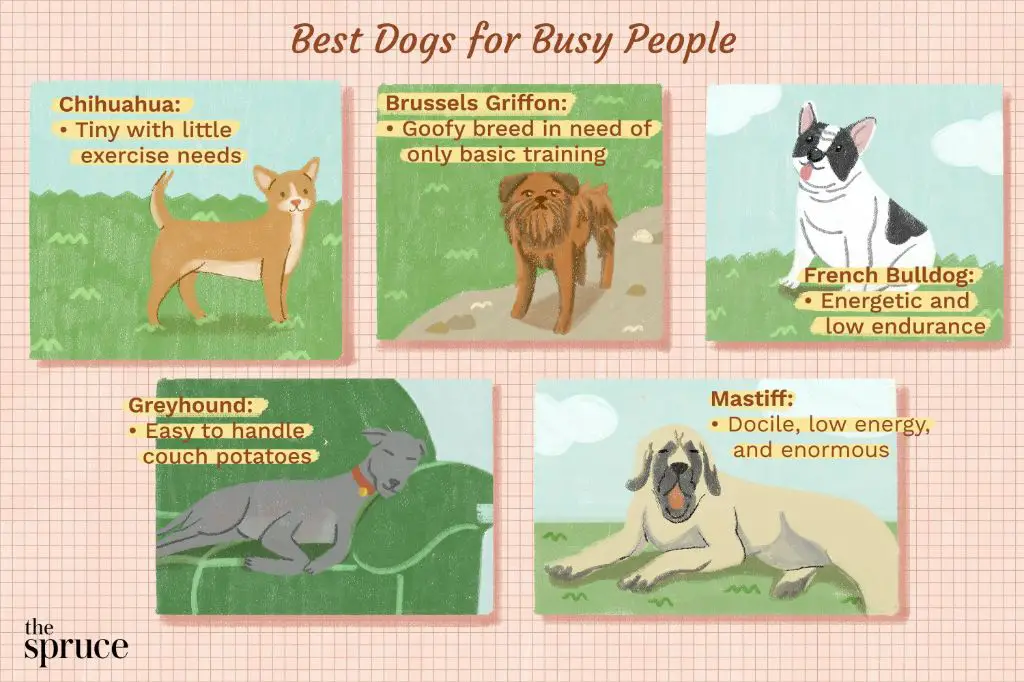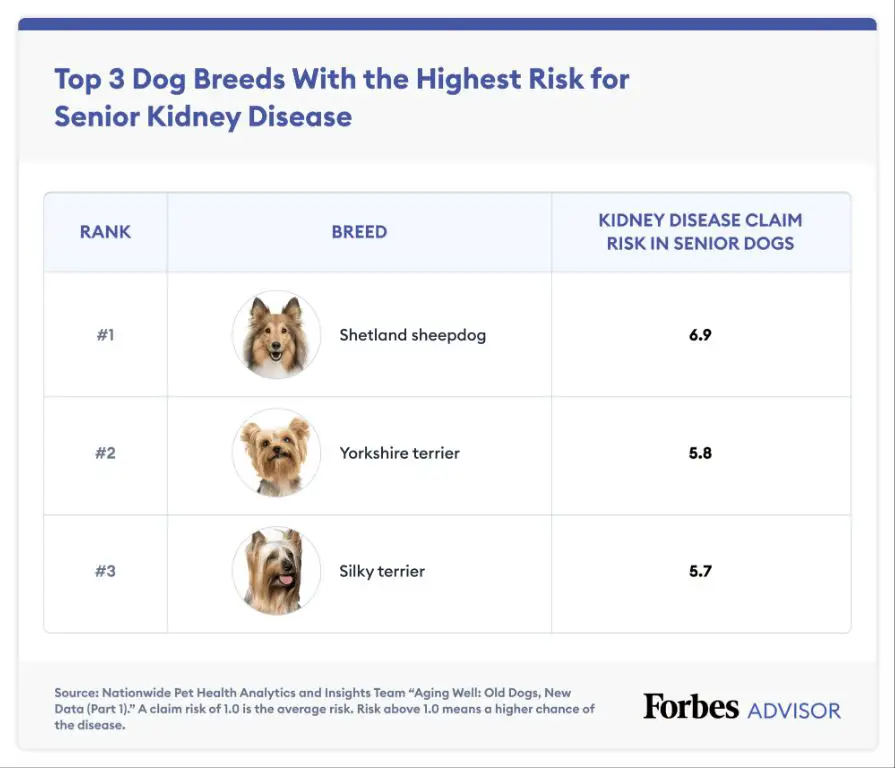Introduction
High maintenance dog breeds refer to dogs that require more time, effort, and expertise to properly care for compared to the average canine. These dogs often have extensive grooming needs, more demanding exercise and training requirements, challenging health issues, and personalities that crave extra attention.
But what exactly makes certain breeds higher maintenance than others? This article will explore the key factors that contribute to a dog being considered high maintenance. We’ll examine the grooming, exercise, training, health, feeding, environmental, and attention needs of popular high maintenance breeds. By the end, you’ll have a better understanding of which dogs tend to be more work and upkeep compared to the typical family dog.
Grooming Needs
Some dog breeds require much more frequent grooming than others. Breeds like poodles and poodle mixes, Bichons, Old English Sheepdogs, Afghan Hounds, and Siberian Huskies need frequent brushing and bathing to keep their coats clean and prevent matting [1]. These breeds often have thick, long coats that can easily become tangled and dirty. Professional grooming every 4-6 weeks is typically recommended.

Other breeds like Poodles, Maltese, Shih Tzus, Lhasa Apsos, and Yorkies are prone to extensive matting if their coats are not brushed thoroughly every day. Their hair continuously grows and sheds, becoming tightly woven together if not removed through daily brushing. Severe matting can be painful and damaging to the skin. Preventing matts requires a significant time commitment for daily brushing and combing [2].
Exercise Requirements
Some breeds have very high exercise needs and require lots of daily activity and exercise. For example, herding breeds like Border Collies and Australian Shepherds are extremely energetic and need upwards of 2 hours of intense exercise per day according to this source. Sporting breeds like Labrador Retrievers and Golden Retrievers also need plenty of exercise.

On the other hand, some breeds are more content with shorter bursts of exercise. For instance, toy breeds like Chihuahuas and Pugs only require around 30 minutes of exercise per day according to this source. Low-energy companion breeds like French Bulldogs and Cavalier King Charles Spaniels are also happy with less rigorous exercise routines.
Training Difficulty
Some dog breeds are naturally more intelligent and require extensive mental stimulation to avoid behavioral issues, making them more difficult to train. For example, breeds like Border Collies and Poodles are extremely smart and get bored easily with repetitive training, needing creative stimulation to stay engaged according to What are the 17 Hardest Dog Breeds to Train?. Without proper mental exercise, these highly intelligent dogs may resort to destructive behaviors or disobeying commands.
Other breeds are more stubborn or independent minded, making training more challenging. Breeds like Bulldogs, Basset Hounds, and Chow Chows are known for being somewhat aloof and less eager to please, requiring extra patience and persistence according to 10 Most Difficult Dogs to Train. Their strong wills and tendency to get distracted can frustrate first-time dog owners. Early socialization and positive reinforcement training helps, but these breeds may never be as obedient as others. Their independent nature simply makes them less motivated to follow commands.
Health Issues
Certain breeds are more prone to genetic health conditions that require regular veterinary care and maintenance. For example, Bulldogs are susceptible to breathing issues, hip dysplasia, cherry eye, and skin fold dermatitis, requiring medication, surgery, and diligent skin care (Source). Poodles and poodle mixes like Labradoodles and Goldendoodles are at risk for progressive retinal atrophy, cataracts, hip dysplasia, and bloat, needing expensive treatments and procedures (Source).

Allergy issues like food allergies, environmental allergies, and skin allergies require maintenance as well. Breeds with wrinkly skin and floppy ears like Shar-Peis, Bulldogs, and Basset Hounds tend to be more prone to skin allergies and infections needing medicated baths, wipes, antibiotics, steroids, or allergy shots from the vet (Source).
Feeding
Certain breeds are known for having more specialized feeding needs than others. For example, some breeds tend to have frequent dietary allergies or intolerances that require careful selection of ingredients, while other breeds can be very picky eaters.
According to WebMD, common breeds with dietary allergies include German Shepherds, English Setters, Irish Setters, Bulldogs, and Shar-Peis. These breeds frequently have issues digesting proteins like beef, dairy, chicken, lamb, fish, eggs, corn, wheat, and soy. Special hypoallergenic diets may be needed.
As noted in Tufts University, Dalmatians often have trouble properly metabolizing purines which can lead to urate stones. Therefore, they require reduced purine diets. Schnauzers and Yorkshire Terriers are also prone to bladder stones.
According to FIGO Pet Insurance, picky eating is common in breeds like Chihuahuas, Chow Chows, Yorkshire Terriers, and Shiba Inus. These breeds may require coaxing with special toppings or mix-ins.
Environment Needs
Some dog breeds have specific climate and space requirements that make them more high maintenance.
Breeds like Pugs, Bulldogs, and other brachycephalic (short-nosed) dogs can overheat easily and require air conditioning during hot weather. According to Choosing the Right Dog for a Rural Environment, these dogs do not do well in excessively hot climates.
Larger breeds like Great Danes and Irish Wolfhounds need ample room to move around comfortably. Small spaces and apartments are not well suited for them. According to What Dog Breeds are Good for Apartment Dwellers?, these giant breeds need houses with yards or acreage.
In contrast, breeds like Basset Hounds, French Bulldogs, and Cavalier King Charles Spaniels are more adaptable to different climates and smaller living spaces, making them lower maintenance regarding environmental needs.
Attention Needs
Certain breeds tend to be more prone to separation anxiety and require near-constant interaction and stimulation from their owners (Source). This makes them more high maintenance in terms of needing attention. Breeds that fall into this category include:

Breeds prone to separation anxiety
Anxious breeds like Yorkshire Terriers, Border Collies, and German Shorthaired Pointers have a strong instinct to be constantly engaged with their family. If left alone for long periods, they may resort to problem behaviors like excessive barking, chewing, or potty accidents (Source). These dogs demand extra love and interaction to remain happy and well-behaved.
Breeds needing constant stimulation/interaction
High-energy breeds like Siberian Huskies, Australian Shepherds, and Jack Russell Terriers require a great deal of physical and mental exercise daily. Without sufficient interactive play, training, or jogging/running, they are prone to boredom and destructive behaviors. Owners must be prepared to spend ample time each day providing enrichment activities and focused attention to meet these breeds’ needs.
Travel Difficulty
Some dog breeds are not well-suited for travel or frequent car rides. Breeds like Greyhounds are known to suffer from motion sickness in vehicles. Their long, narrow build makes them prone to nausea and vomiting during car rides. Other large breed dogs like Great Danes also do not travel well due to their massive size cramped into a small vehicle space.
Dogs that are anxious or stressed by new environments also do not make good travel companions. Breeds like Border Collies and German Shepherds are protective of their home turf and can become very agitated when traveling to new places. They may pace, whimper, drool excessively, or refuse to eat or drink in an unfamiliar place. Short-nosed breeds like Pugs and Bulldogs are also easily stressed by travel due to their breathing issues. The excitement and motion during travel leaves them prone to overheating, wheezing, and gasping.
Summary
In summary, some of the most high maintenance dog breeds include the Puli, Belgian Malinois, Greyhound, Border Collie, Siberian Husky, Beagle, Akita, Bulldog, Chow Chow, and Chinese Crested. The key factors that contribute to a dog being considered high maintenance are extensive grooming requirements, high exercise needs, challenging training, significant health problems, picky feeding habits, sensitivity to heat/cold, high attention and stimulation requirements, and difficulty traveling.
For example, the Puli’s long corded coat requires extensive daily grooming to prevent matting (https://us.streamz-global.com/blogs/articles/10-high-maintenance-dog-breeds-and-health-conditions-to-look-out-for). Border Collies need lots of exercise and mental stimulation to be happy and avoid destructive behaviors (https://www.purina.co.uk/find-a-pet/articles/dog-types/breed-guides/high-maintenance-dog-breeds). Overall, high maintenance dogs require more time, effort, and money compared to average breeds.
